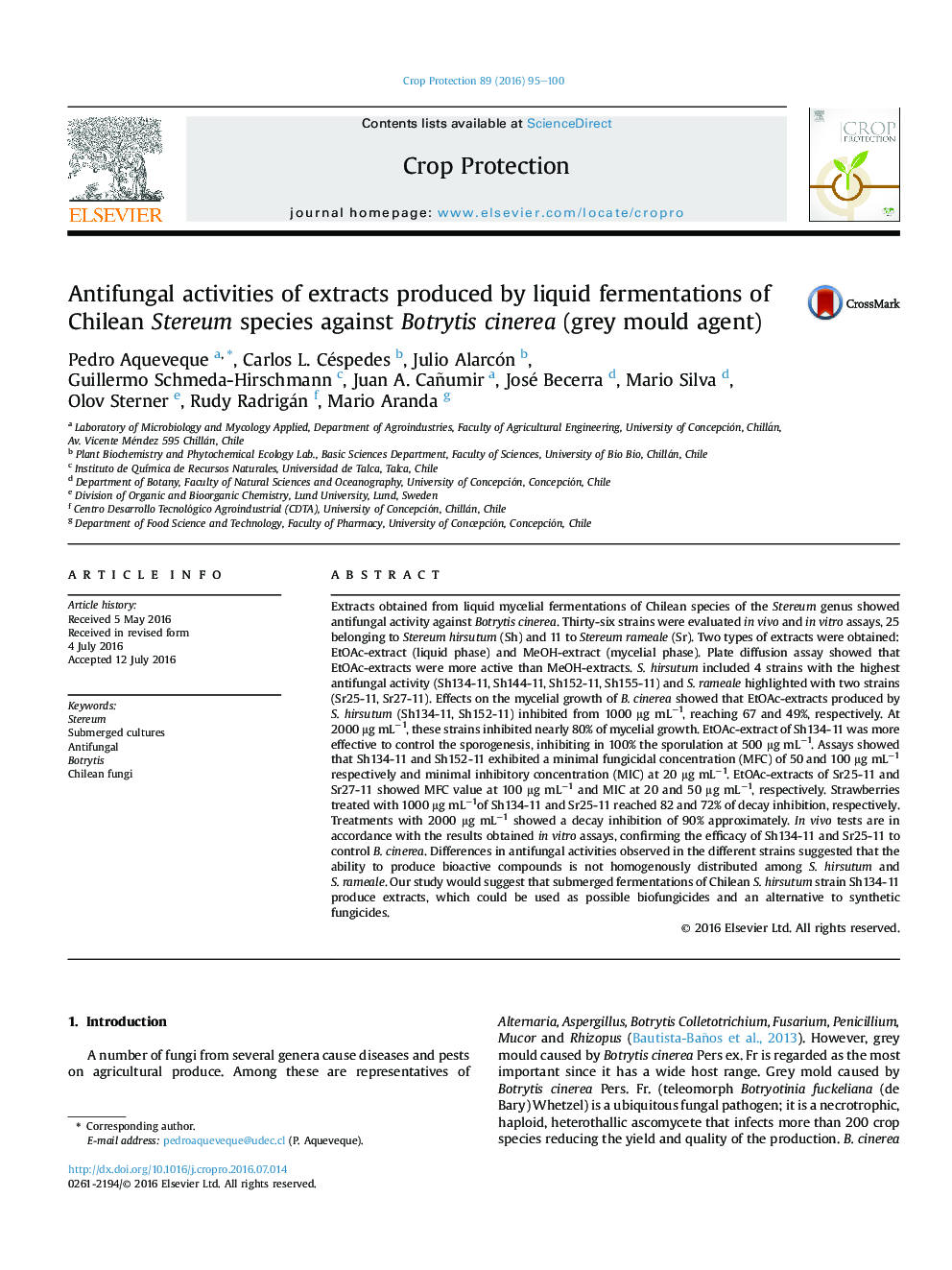| Article ID | Journal | Published Year | Pages | File Type |
|---|---|---|---|---|
| 6373154 | Crop Protection | 2016 | 6 Pages |
Abstract
Extracts obtained from liquid mycelial fermentations of Chilean species of the Stereum genus showed antifungal activity against Botrytis cinerea. Thirty-six strains were evaluated in vivo and in vitro assays, 25 belonging to Stereum hirsutum (Sh) and 11 to Stereum rameale (Sr). Two types of extracts were obtained: EtOAc-extract (liquid phase) and MeOH-extract (mycelial phase). Plate diffusion assay showed that EtOAc-extracts were more active than MeOH-extracts. S. hirsutum included 4 strains with the highest antifungal activity (Sh134-11, Sh144-11, Sh152-11, Sh155-11) and S. rameale highlighted with two strains (Sr25-11, Sr27-11). Effects on the mycelial growth of B. cinerea showed that EtOAc-extracts produced by S. hirsutum (Sh134-11, Sh152-11) inhibited from 1000 μg mLâ1, reaching 67 and 49%, respectively. At 2000 μg mLâ1, these strains inhibited nearly 80% of mycelial growth. EtOAc-extract of Sh134-11 was more effective to control the sporogenesis, inhibiting in 100% the sporulation at 500 μg mLâ1. Assays showed that Sh134-11 and Sh152-11 exhibited a minimal fungicidal concentration (MFC) of 50 and 100 μg mLâ1 respectively and minimal inhibitory concentration (MIC) at 20 μg mLâ1. EtOAc-extracts of Sr25-11 and Sr27-11 showed MFC value at 100 μg mLâ1 and MIC at 20 and 50 μg mLâ1, respectively. Strawberries treated with 1000 μg mLâ1of Sh134-11 and Sr25-11 reached 82 and 72% of decay inhibition, respectively. Treatments with 2000 μg mLâ1 showed a decay inhibition of 90% approximately. In vivo tests are in accordance with the results obtained in vitro assays, confirming the efficacy of Sh134-11 and Sr25-11 to control B. cinerea. Differences in antifungal activities observed in the different strains suggested that the ability to produce bioactive compounds is not homogenously distributed among S. hirsutum and S. rameale. Our study would suggest that submerged fermentations of Chilean S. hirsutum strain Sh134-11 produce extracts, which could be used as possible biofungicides and an alternative to synthetic fungicides.
Related Topics
Life Sciences
Agricultural and Biological Sciences
Agronomy and Crop Science
Authors
Pedro Aqueveque, Carlos L. Céspedes, Julio Alarcón, Guillermo Schmeda-Hirschmann, Juan A. Cañumir, José Becerra, Mario Silva, Olov Sterner, Rudy Radrigán, Mario Aranda,
